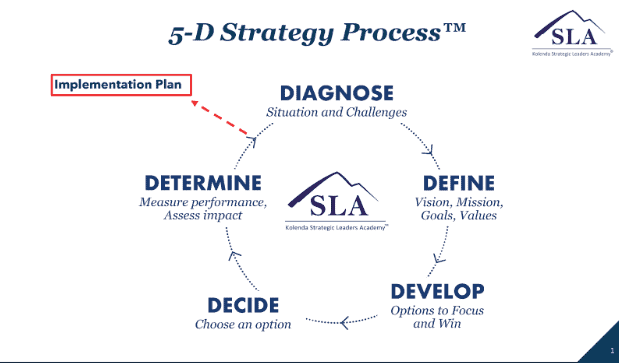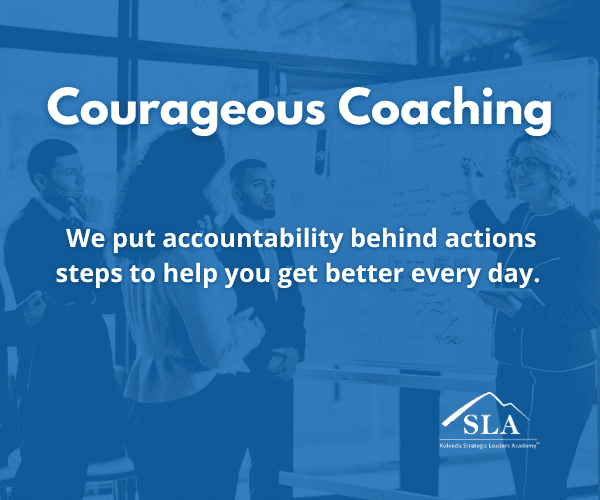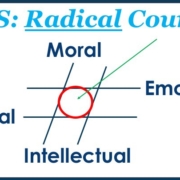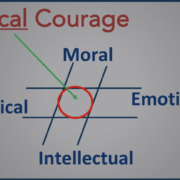3 Critical Differences Between a Strategy and a Plan
What’s the difference between a strategy and a plan?
Afghanistan, 2007. We were executing our plan perfectly. All of our metrics indicated that we were on an upward trajectory. We were working hard, creating efficiencies, and consistently improving. We felt good about our performance.
And yet, we were not succeeding.
That was exactly how I felt after the first 60 days as a commander in Afghanistan. We were winning every firefight, but the enemy kept growing. Something was amiss.
When we begin talking, many of my clients express the unsettling feeling that something is missing – and that missing “something” is creating a gap between high performance and success.
The normal approach to this problem is to stay on the trajectory but work harder, in the belief that this will lead to incremental progress and greater efficiency.
The problem, however, is that high performance does not necessarily equal success.
This is a difficult truth to swallow, especially for leaders. To admit that is to recognize that the plan is flawed; that factors beyond our control affect the outcome. What we are directing our employees to do, what we are prioritizing, and what we are measuring may all be off-target.
Leaders excessively concerned with execution can begin to drink their own Kool-Aid, believing that blips in performance are evidence of success. This can reinforce the blinders and refuel the desire to do the same things over and over again, but expecting different results. The technical term for this is confirmation bias.
This is where strategy comes in.
Strategy helps you expose disconnects between success and performance, ask the right questions, and adjust as the marketplace shifts under your feet.
Strategy identifies your purpose and direction. A plan details how you execute that direction. The common term “strategic plan” is an oxymoron, like fitness exercise or financial investing.
The upshot of the unhappy strategic plan marriage is that you do both poorly; you wind up with a 5-year plan that has no chance whatsoever of becoming a reality in today’s volatility.
You need both a strategy and a plan, and the latter needs a much shorter timeframe (1 year or less) than more companies assume.
Here are three critical differences between a strategy and a plan:
- A strategy faces outward, first. A plan faces inward
- A strategy considers factors you don’t control; a plan focuses on what you do control
- A strategy measures success; a plan measures performance
Let’s break these down.
- A strategy faces outward, first. A plan faces inward
A sound strategy begins with diagnosing the marketplace and your place within it. This establishes your startpoint. Your mission is your destination.
This context is dynamic. The marketplace is constantly in flux, influenced by factors like technology, social and political changes, government policy, competitor choices, and so forth. Your strategy should identify those factors most likely to affect your outcomes. How you believe they will unfold and shape the future becomes your assumptions.
Once you have outlined the context, you can develop your theory of success – your path from start point to destination. A good strategy process will produce more than one theory of success, so you can choose the one you think is best.
Your plan faces inward. It focuses on how to execute the chosen path.
*THIS 5-D STRATEGY PROCESS® IDENTIFIES THE KEY STEPS

- A strategy considers factors you don’t control; a plan directs what you do control
A strategy is not a crystal ball that foretells how your organization can achieve a desired end-state. Nor is it a blueprint of the bridge from the present to the future. These analogies are too deterministic and self-centered for a dynamic and uncertain marketplace.
A strategy is a hypothesis, a best guess that relies on assumptions about the future and factors you do not control. A proper strategy is explicit about these assumptions, allowing you to monitor them as the future unfolds.
Revising your assumptions is a sign of wisdom. When you do so, you may need to modify your strategy.
*DISCUSS THE VALIDITY OF YOUR ASSUMPTIONS DURING YOUR QUARTERLY BOARD MEETINGS
Now that your strategy outlines how everything fits, you can make an implementation plan to direct the activities under your control.
*HAVE THE PEOPLE RESPONSIBLE FOR EXECUTING THE PLANS DRAW THEM UP. MORE OWNERSHIP LEADS TO BETTER EXECUTION
- Strategy measures success; a plan measures performance
Your goals are waypoints between your start point and destination and inform your strategic measures.
Your plan outlines the critical tasks necessary to implement your strategy. Measuring performance enables you to assess the strength of the execution.
Keep your impact and outcome measures separate from your performance measures. This is because impact and outcomes are influenced by factors you cannot control.
High performance on your implementation tasks and poor achievement of your strategic goals indicate that factors outside your control undermine your ability to succeed.
You need to understand these factors and adjust your strategy and plan accordingly.
*MINDING THE GAP BETWEEN SUCCESS AND PERFORMANCE WILL HELP YOU ADJUST FASTER THAN YOUR COMPETITORS
Back to Afghanistan. Executing our plan was making things worse because our assumptions were wrong. We adjusted our strategy and created a game plan that we reviewed every 90 days.
Getting the strategy right enabled our paratroopers to succeed in Afghanistan by motivating a large insurgent group to stop fighting and switch sides.
A sound strategy helps my clients create sustainable growth and impact.
To learn more about the difference between a strategy and a plan (and why a “strategic plan” tends to be a reverse Goldilocks), see our short video “Strategy versus Strategic Plan.”
What is your top takeaway from this article? Write a comment, DM me on LinkedIn, or email me at chris@strategicleadersacademy.com.












